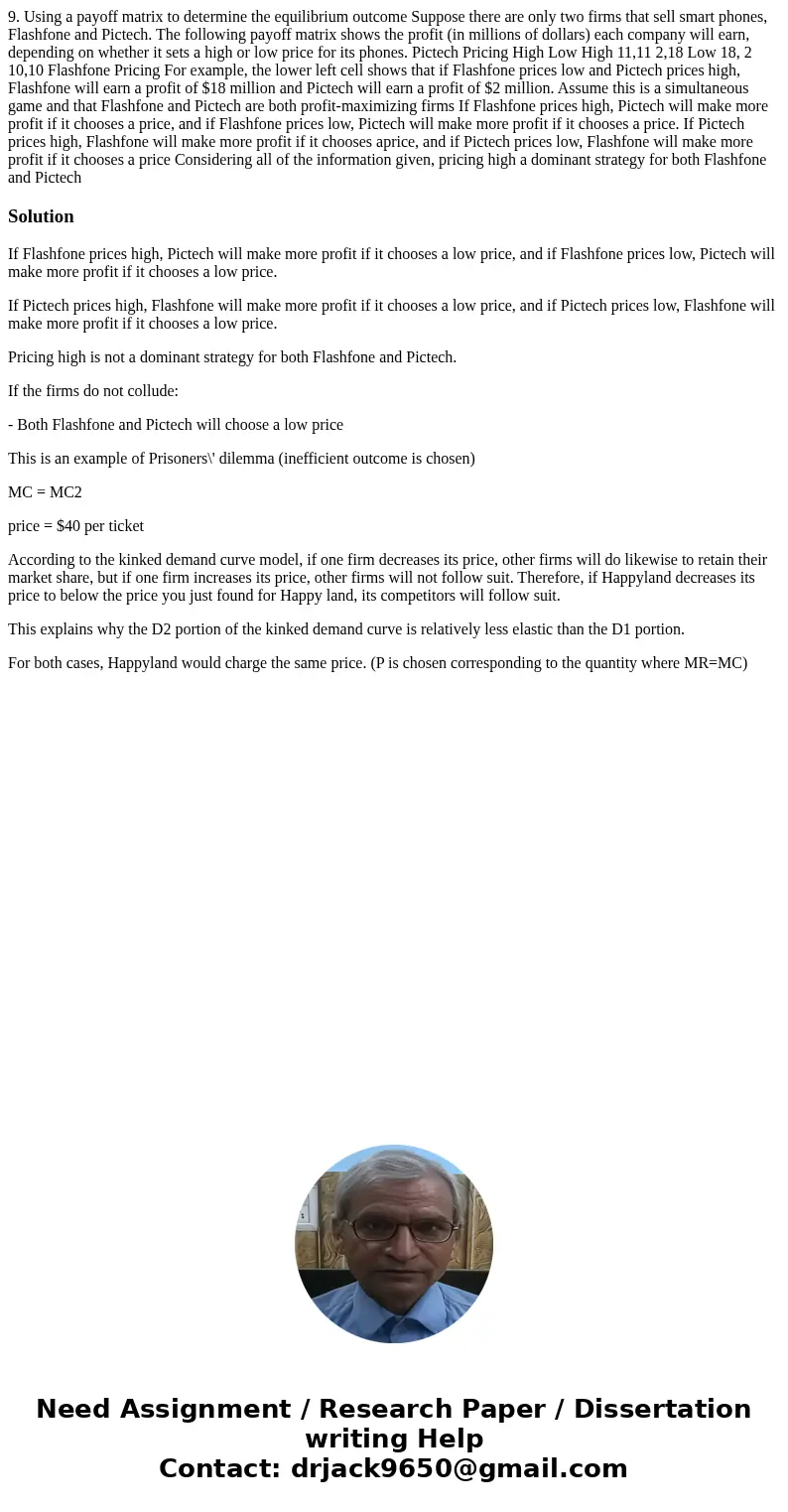9 Using a payoff matrix to determine the equilibrium outcome
Solution
If Flashfone prices high, Pictech will make more profit if it chooses a low price, and if Flashfone prices low, Pictech will make more profit if it chooses a low price.
If Pictech prices high, Flashfone will make more profit if it chooses a low price, and if Pictech prices low, Flashfone will make more profit if it chooses a low price.
Pricing high is not a dominant strategy for both Flashfone and Pictech.
If the firms do not collude:
- Both Flashfone and Pictech will choose a low price
This is an example of Prisoners\' dilemma (inefficient outcome is chosen)
MC = MC2
price = $40 per ticket
According to the kinked demand curve model, if one firm decreases its price, other firms will do likewise to retain their market share, but if one firm increases its price, other firms will not follow suit. Therefore, if Happyland decreases its price to below the price you just found for Happy land, its competitors will follow suit.
This explains why the D2 portion of the kinked demand curve is relatively less elastic than the D1 portion.
For both cases, Happyland would charge the same price. (P is chosen corresponding to the quantity where MR=MC)

 Homework Sourse
Homework Sourse